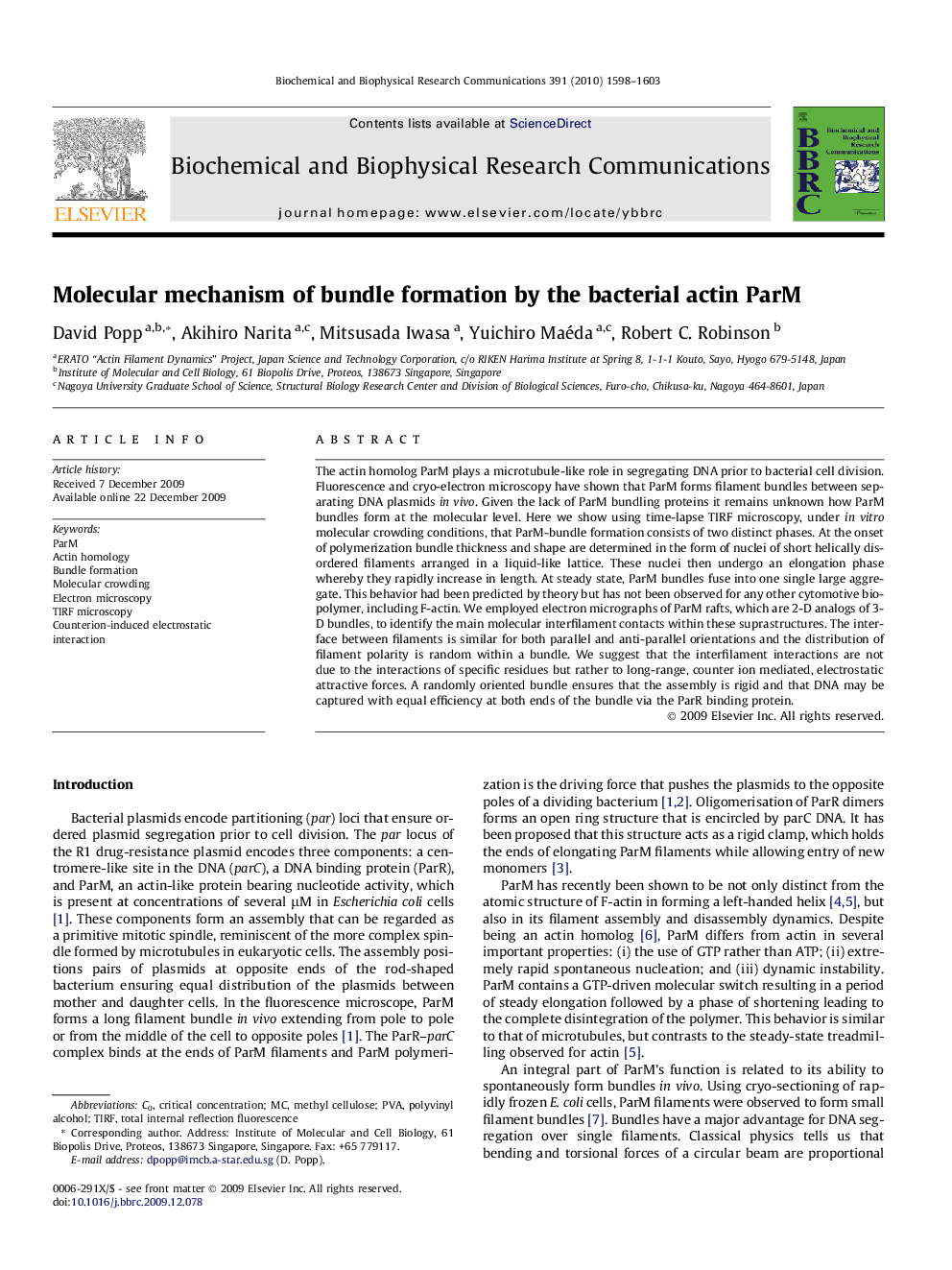| Article ID | Journal | Published Year | Pages | File Type |
|---|---|---|---|---|
| 1932267 | Biochemical and Biophysical Research Communications | 2010 | 6 Pages |
The actin homolog ParM plays a microtubule-like role in segregating DNA prior to bacterial cell division. Fluorescence and cryo-electron microscopy have shown that ParM forms filament bundles between separating DNA plasmids in vivo. Given the lack of ParM bundling proteins it remains unknown how ParM bundles form at the molecular level. Here we show using time-lapse TIRF microscopy, under in vitro molecular crowding conditions, that ParM-bundle formation consists of two distinct phases. At the onset of polymerization bundle thickness and shape are determined in the form of nuclei of short helically disordered filaments arranged in a liquid-like lattice. These nuclei then undergo an elongation phase whereby they rapidly increase in length. At steady state, ParM bundles fuse into one single large aggregate. This behavior had been predicted by theory but has not been observed for any other cytomotive biopolymer, including F-actin. We employed electron micrographs of ParM rafts, which are 2-D analogs of 3-D bundles, to identify the main molecular interfilament contacts within these suprastructures. The interface between filaments is similar for both parallel and anti-parallel orientations and the distribution of filament polarity is random within a bundle. We suggest that the interfilament interactions are not due to the interactions of specific residues but rather to long-range, counter ion mediated, electrostatic attractive forces. A randomly oriented bundle ensures that the assembly is rigid and that DNA may be captured with equal efficiency at both ends of the bundle via the ParR binding protein.
